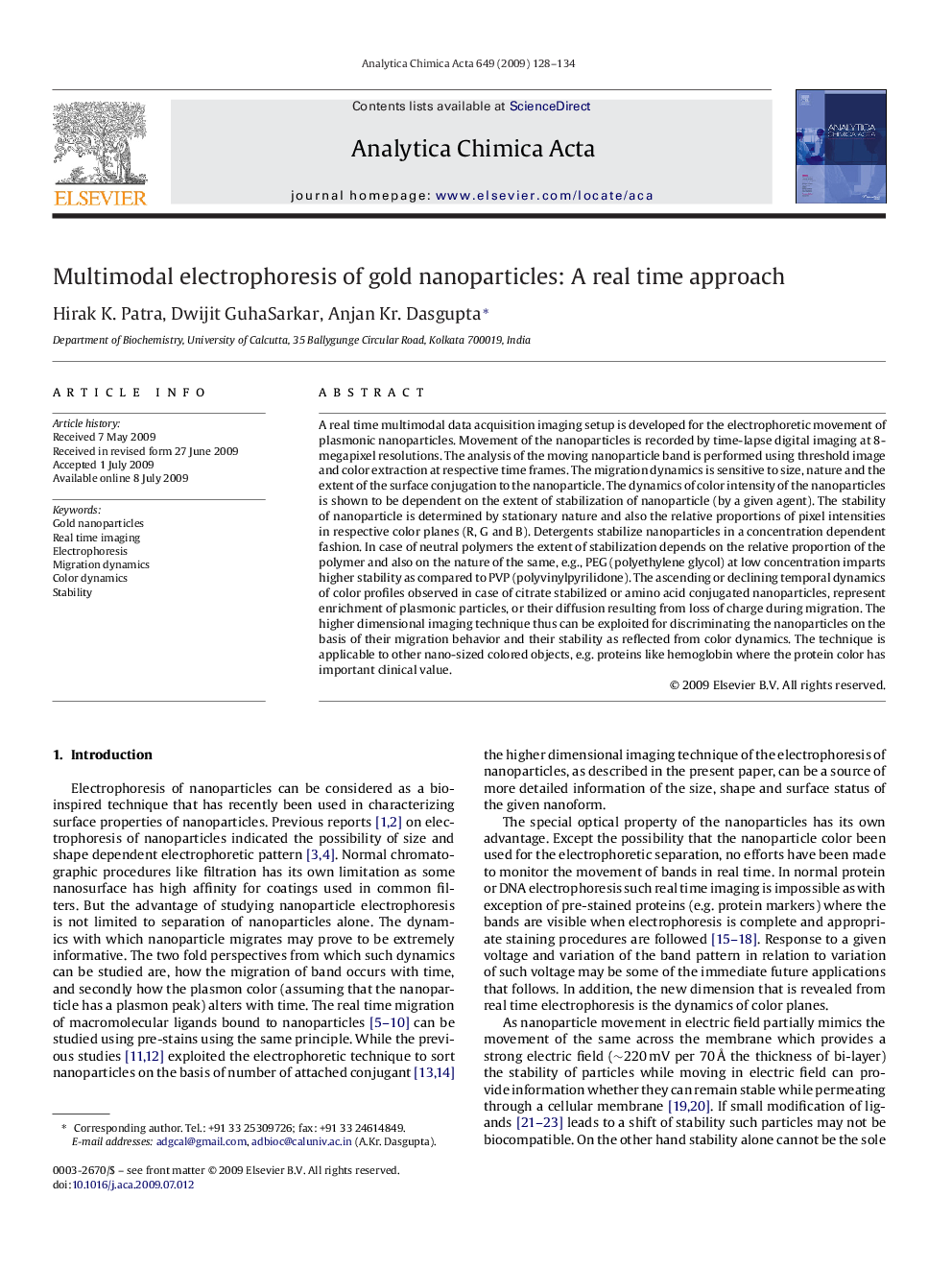| Article ID | Journal | Published Year | Pages | File Type |
|---|---|---|---|---|
| 1168341 | Analytica Chimica Acta | 2009 | 7 Pages |
A real time multimodal data acquisition imaging setup is developed for the electrophoretic movement of plasmonic nanoparticles. Movement of the nanoparticles is recorded by time-lapse digital imaging at 8-megapixel resolutions. The analysis of the moving nanoparticle band is performed using threshold image and color extraction at respective time frames. The migration dynamics is sensitive to size, nature and the extent of the surface conjugation to the nanoparticle. The dynamics of color intensity of the nanoparticles is shown to be dependent on the extent of stabilization of nanoparticle (by a given agent). The stability of nanoparticle is determined by stationary nature and also the relative proportions of pixel intensities in respective color planes (R, G and B). Detergents stabilize nanoparticles in a concentration dependent fashion. In case of neutral polymers the extent of stabilization depends on the relative proportion of the polymer and also on the nature of the same, e.g., PEG (polyethylene glycol) at low concentration imparts higher stability as compared to PVP (polyvinylpyrilidone). The ascending or declining temporal dynamics of color profiles observed in case of citrate stabilized or amino acid conjugated nanoparticles, represent enrichment of plasmonic particles, or their diffusion resulting from loss of charge during migration. The higher dimensional imaging technique thus can be exploited for discriminating the nanoparticles on the basis of their migration behavior and their stability as reflected from color dynamics. The technique is applicable to other nano-sized colored objects, e.g. proteins like hemoglobin where the protein color has important clinical value.
